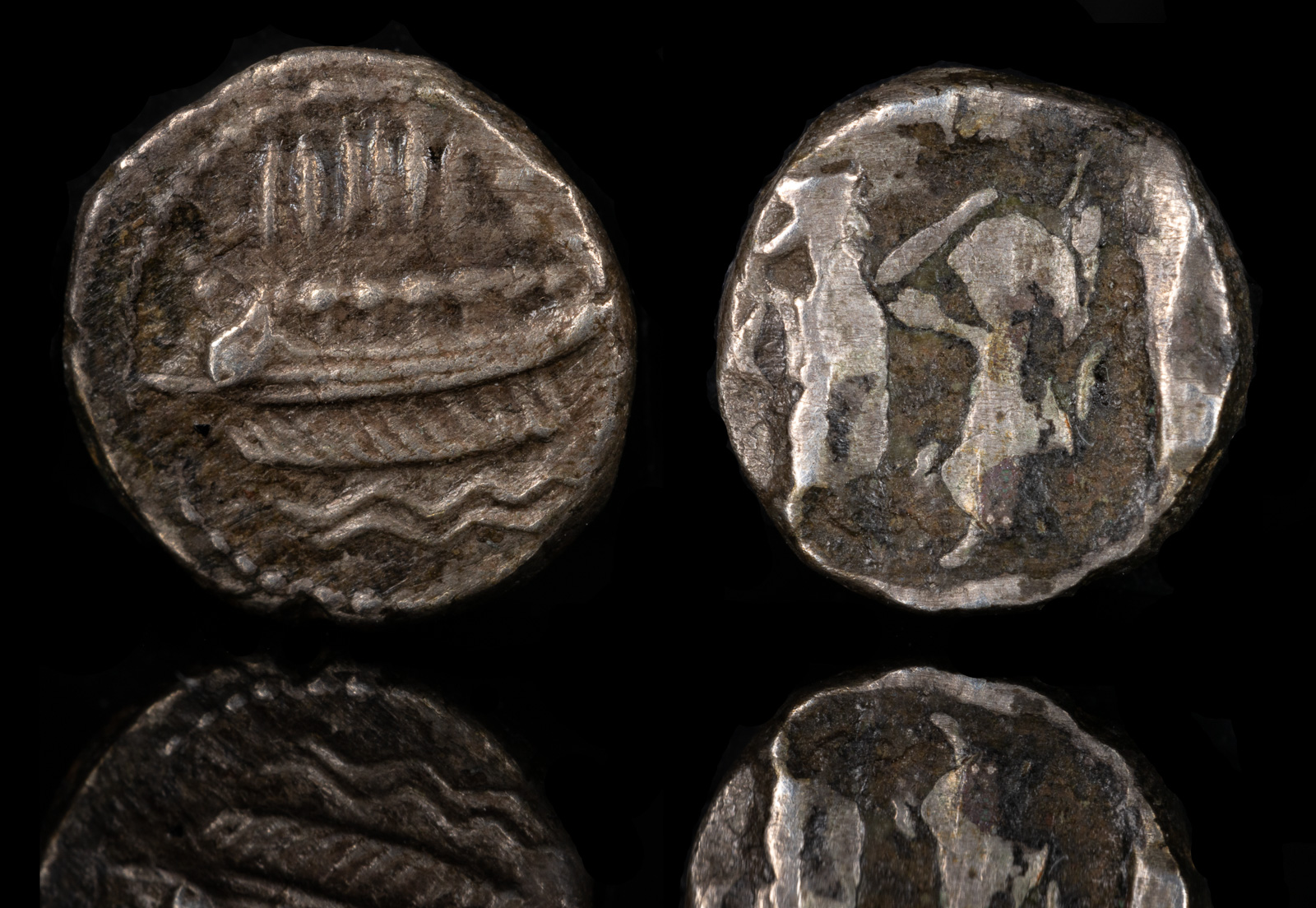
Phoenicia, Sidon AR 1/16 Shekel
`Abd`aštart (Straton) I
dated RY 6 = 337/6 BCE 0.86g, 9mm, 12h.
Phoenician galley to left; IIIIII above, waves below / Persian king or hero, holding dagger and standing to right, fighting lion standing to left; [‘B] (in Phoenician) between; all within incuse square.
E&E-S Group IV.5.4.c; DCA 866; HGC 10, 263
Ex Gorny & Mosch Giessener Münzhandlung 2012
Ex Roma 2021
Sidon had a rather unfortunate history leading up to the invasion by Alexander the Great. This coin was minted by the king Straton, also known as Abdastart III. I’m not sure exactly how you get ‘Straton’ from ‘Abdastart’, but perhaps were this today he would have been known as ‘Ralph’.
Straton’s father was named Tennes, and his father was also a Straton (Abdastart II). Before our Straton, the family tradition was to rebel against the current power. That was the Achaemenid Empire under his father and grandfather, and the situation ended so badly for Tennes that he was executed and the city of Sidon obliterated. Roughly 40,000 died in the liquidation.
Perhaps with an eye toward that history, Straton didn’t test Alexander the Great. He immediately surrendered the city, and Alexander did no more damage. Interestingly, while in other cities the king was allowed to stay on the throne, that doesn’t seem to have been the case with Sidon.
The legend has it that Alexander tasked his second-in-command Hephaistion to choose a new ruler, and Hephaistion chose a poor gardener who technically had royal ties. Abdalonymos ruled for an unknown number of years, though the Alexander coins of Sidon seem to have been numbered by him.
We have no idea what happened to Straton. Sidon soldiers were present at the Siege of Tyre and managed to rescue many citizens from Alexander‘s wrath. Could he have had a part in this?
Alexander III deposes Straton as king of Sidon.